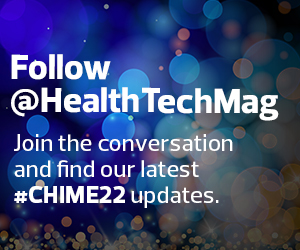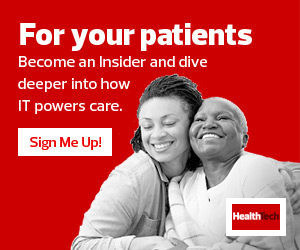HEALTHTECH: How has the healthcare sector changed in the years since you became LCMC Health’s first CIO?
TOWNSEND: When I was still trying to figure out what I wanted to be, I was getting my degree in healthcare administration. This was at a time when everything was still very paper-based. Electronic health records really were in their infancy, if they existed at all. I think it was a good time for me to learn more about what the future held for EHRs and how I needed to learn more about that. I went on to get my degree in medical informatics. It was a risk at the time because nobody really knew what that was. Now, of course, informatics is a term we use all the time, but back then, it was not so common. I’ve been in the field for over 20 years now.
I started out as an analyst and then moved into project management and leadership roles. I’ve been a CIO now for about 15 years. The journey around EHRs and healthcare IT has grown over those years. When I started my career, things like computerized physician order entry were not accepted or adopted. Things like mobile computing, remote workforce and moving from focusing on the provider through those implementations to now focusing on the patient — I would say it’s been a journey. The first decade of my career, it was a lot of hard work, and it took a long time to do implementations.
Implementing an EHR was a long process. Where we’re at now, everything’s very agile. We don’t have the luxury of spending 10 years doing implementations and having everything perfected. There’s agility and innovation not just for implementations but also user adoption.
When I joined LCMC Health, we were independent hospitals doing different things for technology solutions and processes. My journey here has been around integration and what I’ll call “system-ness” — putting in the same technology platforms and setting standards across the organization.
HEALTHTECH: How have digital solutions influenced your organization’s approach to patient-centered care?
TOWNSEND: The first part of my career was really focused on the clinician experience. Now, we're shifting that focus to continuing to take care of the clinician but also the patient. How do we ensure that we’re looking at it through both lenses? Patients have choices, so we need to make sure that our experience is just as good as our competitors’. What do our patients want? How do we make care convenient? How do we make it easy to access our organization? How do we add transparency to the experience? We are in a very competitive landscape in healthcare. So, that’s what we’re putting a lot of focus on now.
One of the most recent projects we worked on was advancing our online scheduling capabilities within our patient portal. Patients want to use an app; they don’t necessarily want to use a call center. They want the convenience they get in retail or food service. We did a big optimization project to ensure we opened access in the most convenient way. We’ve been live now in our first pilot of that implementation, and we’re seeing an increase of 15 percent per day of patients that are scheduling through this platform. Within just one month, we have some metrics to show that patients like and want this convenience.
DISCOVER: How to implement patient portals and improve patient experience.
HEALTHTECH: What developments are helping improve the clinician experience? What have you done at LCMC Health that you would recommend to other organizations?
TOWNSEND: We’re putting a lot of focus on our workforce now, what with shortages in so many areas. Currently, we’re targeting the nursing side: We have a project called Project Joy, where we’re partnering with nurse subject matter experts and our chief nursing officers. We’re asking how we can make things more efficient within our EHR and our technology experience to make nurses’ lives easier and potentially happier. Project Joy was kicked off this summer. We’re measuring that we have saved our nurses 1.8 million clicks per month in our organization, or more than 1,000 hours per month. That’s giving time back, and hopefully making them happier.
We’re also focusing on our physicians and how we can make them more efficient. Now we have data to be able to target what we want to work on. In the paper world, you didn’t really have that kind of data to understand the analytics and predict where those opportunities are. We’re really leveraging data to understand how our clinicians are spending their time so we can be more targeted in how we approach that.
Click the banner below for access to exclusive HealthTech content and a customized experience.














